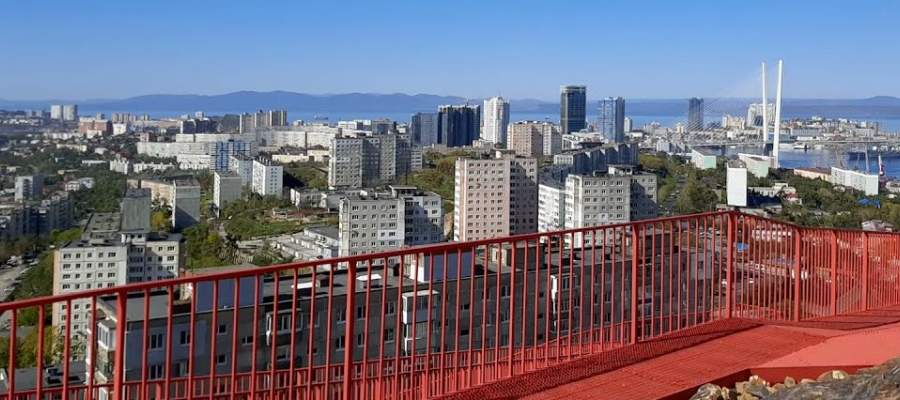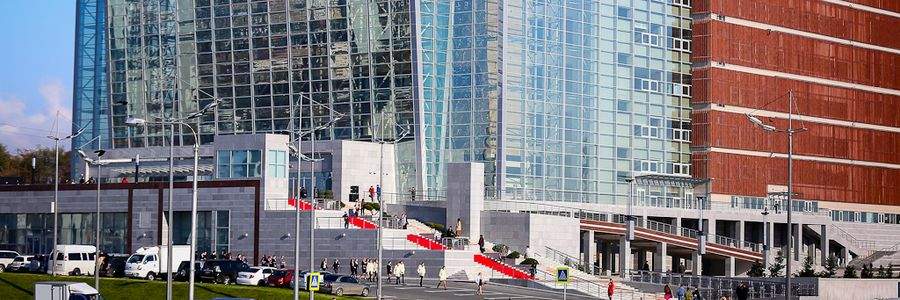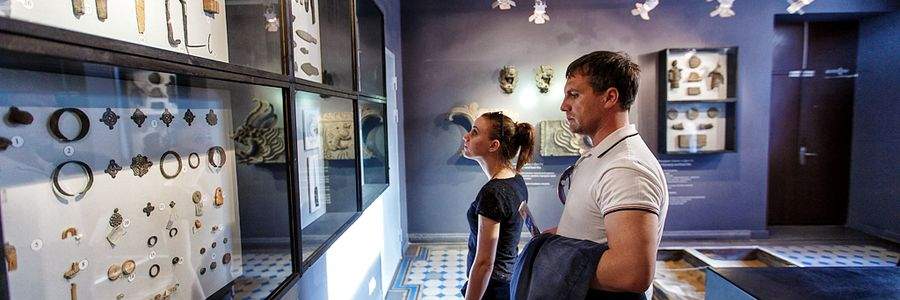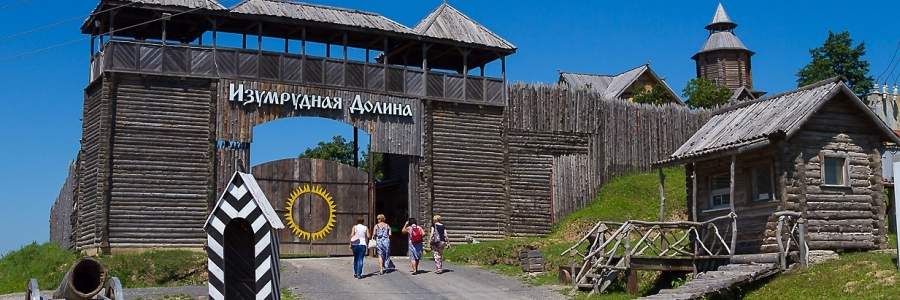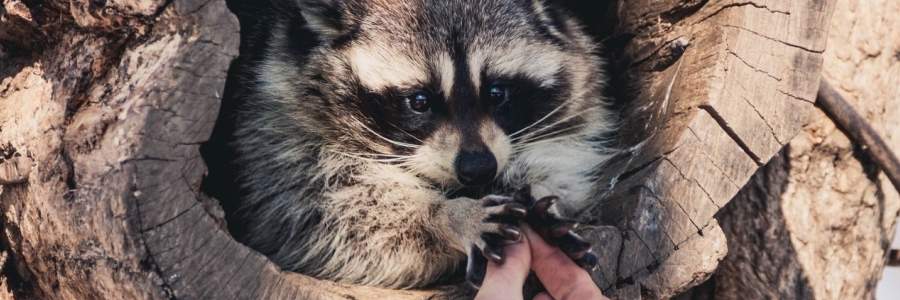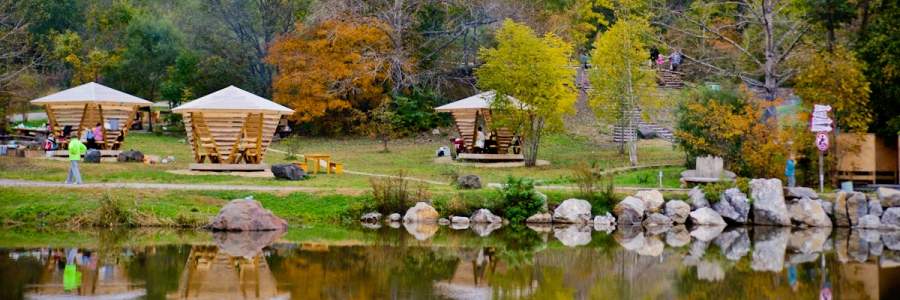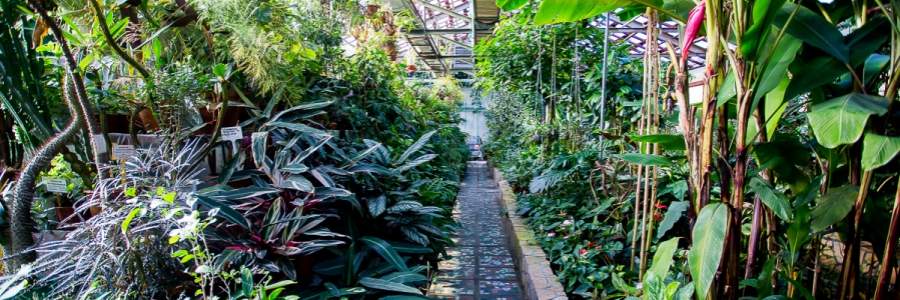Places to visit and travelling around
Sports Harbor Embankment (Sportivnaya Naberezhnaya)
This is one of the oldest and most popular places for walking, spending time with friends in a cozy café or enjoying the sea views. The main attraction of the Sports Harbor is a wonderful light and music fountain that operates on weekends and public holidays.
In 2013, a statue of two bronze tiger cubs that raises awareness of saving this rare animal was installed on the embankment. Immediately, these bronze baby tigers found their way into the heart of every Vladivostok resident and guests of the city.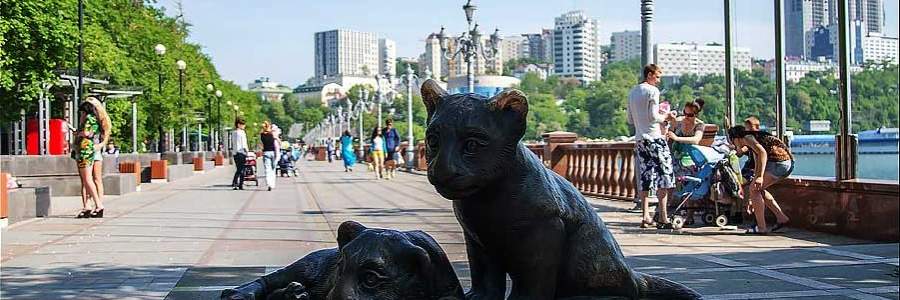
Crown Prince Embankment (Naberezhnaya Tsesarevicha)
The Crown Prince Embankment was opened in 2012 and is considered the “youngest” embankment in Vladivostok. By design, the Crown Prince Embankment is a large promenade suitable for roller skaters, skateboarders and people who just come to walk and spend time with friends. The waterfront offers a scenic view of the Zolotoy (Golden) Bridge and ships moored in the Zolotoy Rog (Golden Horn) Bay. Noteworthy objects are a large chessboard, the “Bridge of Love”, and the “Bed of Reconciliation”, with the carved-in phrase “I love you” written in 26 different languages.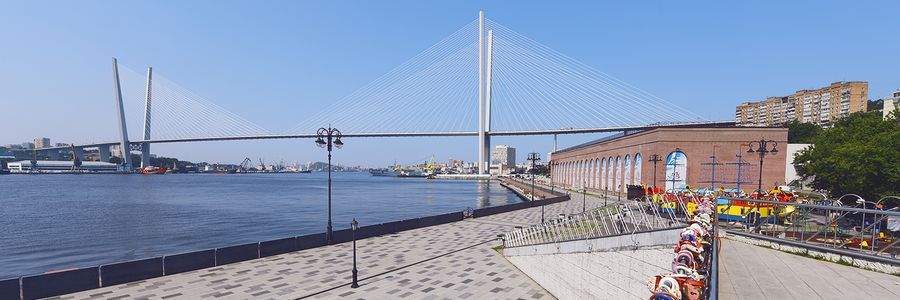
S-56 submarine
Today the Soviet S-class submarine S-56 is one of the highlights of the “Military Glory of the Pacific Navy Fleet” memorial complex. The S-56 is believed to be the most successful Soviet submarine that fought in World War II, which is discussed in the documentary The Mystery of the Three Oceans, produced by Sergei Brilyov and released in 2014 (https://youtu.be/KBcSvu_0fqg).
In 1975, to honor the 30th anniversary of the victory in World War II, the submarine was converted into a monument and was mounted on the central embankment (Korabelnaya Naberezhnaya) in Vladivostok, near the Navy Fleet headquarters. It is also listed as a branch of the Military Historical Museum of the Pacific Navy Fleet: the original interior of the submarine’s central and bow compartments is well preserved, so one can see real sailors’ bunks, peer inside the torpedo tube, and look out through the periscope.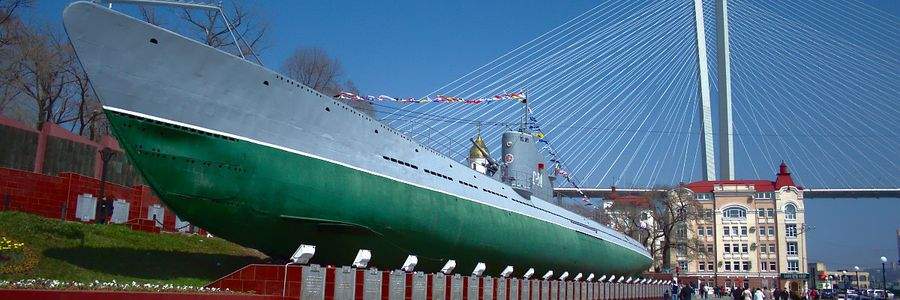
The Triumphal Gates of Nikolai
The monument's history begins in January 1891, when the city became aware of the impending visit of heir-to-the-throne Crown Prince Nikolas Aleksandrovich Romanov. The Vladivostok City Duma, upon considering the preparations necessary for meeting their distinguished guest, decided to build "stone triumphal gates" in his honor. The Triumphal Arch was built in the "Russian Style," typical of similar buildings of the late 19th and early 20th century. The Arch symbolized the Vladivostok sea gates, through which the future Emperor solemnly passed to enter the city.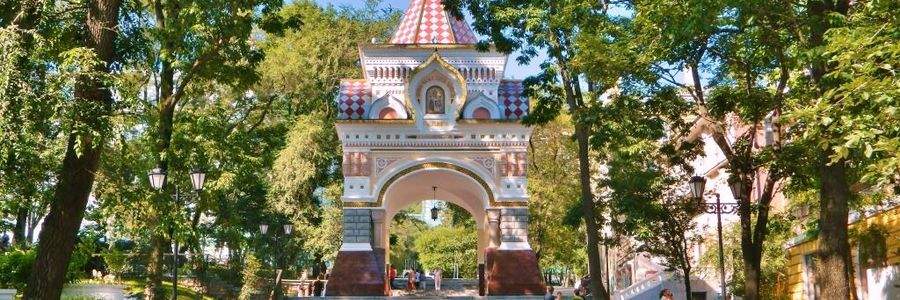
Funicular
The funicular in Vladivostok is a cable car system, consisting of only two cable cars that run up and down the slope of Orlinaya (Eagle) Hill, connecting two parallel streets: Puskinskaya and Sukhanova. Due to its unique and scenic view over Zolotoy Rog (Golden Horn) Bay, the Vladivostok funicular has become a popular tourist attraction, despite the short length of its route (183 meters, which is only a 1.5-minute ride). Tourists can also book guided group tours and visit the holiest of places — the engine room of the funicular. Funicular operators are used to the tourists’ excitement and gladly satisfy their curiosity by answering their questions.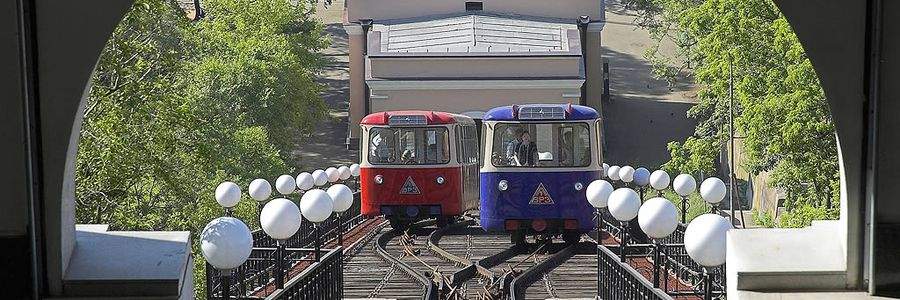
Eagle’s Nest Observation Point
Eagle’s Nest is the most popular and observation point that gives breathtaking panoramic views of the city. In fact, it is an excellent place to start getting familiar with the city of Vladivostok. The vantage point offers a magnificent bird’s-eye view over the city and Zolotoy Rog (Golden Horn) Bay. Visitors enjoy a stunning city skyline, the bay view, and fresh sea air.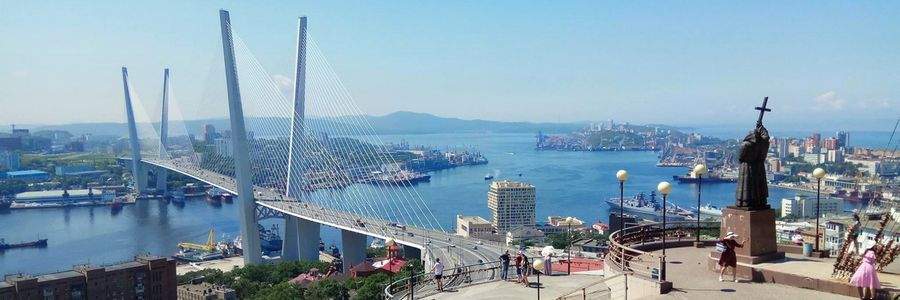
Tokarevsky Lighthouse
The lighthouse, located on a rocky Tokarevsky Spit, is a vantage point that shows where the land ends and the Pacific Ocean begins. Tokarevsky Spit is almost 800 meters in length. A man-made island was created as the foundation for the lighthouse. Built in 1876, the Tokarevsky Lighthouse is one of the oldest operating lighthouses in the Russian Far East. The white tower on the octagonal foundation, as we know it today, was erected in 1910; the height of the lighthouse tower is 11.9 meters.
During winter on Tokarevsky Spit, you can see spotted seals (also known as largha) swimming in the Vladivostok waters. It’s best to admire them from a distance, so as to not disturb the wild animals with excessive human curiosity.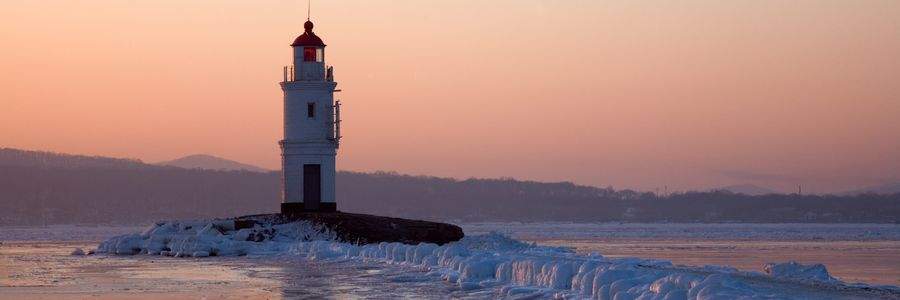
Primorsky Stage of Mariinsky Theatre
Primorsky Stage of Mariinsky Theatre, a large modern opera house with 1,702 seats opened in 2013, has rapidly become the center of cultural life in the Primorye region. The Small Hall (312 seats) is designed for chamber music concert, and it showcases nights of romantic songs as well as short scenes from ballets. The Parterre (orchestra level) is leveled with the stage, opening up the space. The Grand Hall of the theater with the capacity to house 1,390 people is used for large-scale opera and ballet productions, such as well-known classics - Yevgeniy Onegin, Carmen, The Nutcracker, Swan Lake. The Summer Stage is designed for outdoor performances and orchestra chamber concerts.
Primorsky Stage of Mariinsky Theatre invites bright, and incredibly talented individuals from all over the world: musicians from Mariinsky and Bolshoi Theaters; international award-winning opera singers; and ballet dancers from Korea, Japan, and the United States.
The Arseniev museum of Primorsky krai
Today the museum consists of four facilities: the main building ( 20 Svetlanskaya Street), where the main displays and exhibitions are held; the City Museum ( 6 Peter the Great Street); the Arseniev Memorial House-Museum ( 7B Arsenyiev Street), and the Sukhanov House-Museum ( 9 Sukhanova Street).
The museum has about 600 thousand exhibits. The permanent exhibitions, devoted to the history and culture of the city and region, are often combined with temporary rotating shows. The museum has become a modern cultural and educational platform. It hosts lectures, round tables, workshops and classes for children and adults and so on.
The Zarya Center for Contemporary Art
The Zarya (rus. - dawn) Center for Contemporary Art, the first Far Eastern loft and art cluster in the city, was opened in 2013 in an old Soviet garment factory. This urban space surprises visitors with its architecture and design, exhibitions, film screenings, lectures and unusual free atmosphere. Every month painters, sculptors, and photographers come from around the world to create their own project in Vladivostok, conduct lectures and workshops, and communicate with citizens.
For people who are not really interested in contemporary art there is a beautiful reading room with the latest new books, fast wi-fi and a small coffee shop.
Mount Livadiyskaya (Pidan)
Mount Livadiyskaya, part of the Sikhote Alin mountains, is better known under its old name: Pidan. This is the most popular, the most visited, and the most mysterious mountain in South Primorye. Pidan’s popularity is linked to its accessibility: 2-½ hours from Vladivostok by train, and then a little more than 3 hours by foot through the taiga. Some people believe Pidan has strong energy and call the mountain magical and mystical.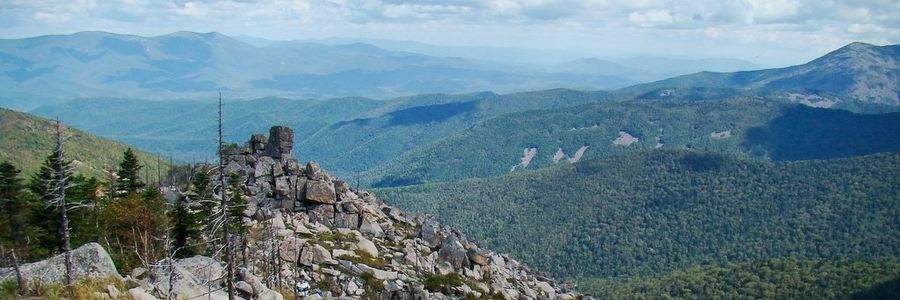
Shamora seaside
Shamora is a favorite vacation spot for Vladivostok citizens. It is a sandy beach about 30 km from the city with cafes, restaurants, vocational houses and attractions for children. Here people fly planes and gliders, jump on trampolines, and go windsurfing. The bay does not freeze in winter, and is half-open to the Sea of Japan, which brings Shamora serious ocean groundswells with regularity.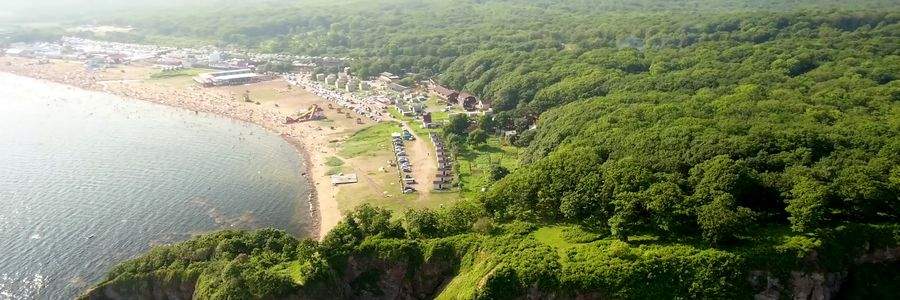
Izumrudnaya Dolina (Emerald Valley) Historical Park
The Izumrudnaya Dolina Park, just outside of Ussuriysk, 110 km from Vladivostok, is an outdoor history museum, located on a vast 60 hectares. The project initiators have recreated human dwellings from different eras and cultures: from the Stone Age to Cossack forts and Asian pagodas. Here you can learn how local medieval people lived: Balhae and Jurchen, become familiar with the culture of ancient Russia, and learn about the development of Siberia. Special attention is given to Primorye\'s neighbors: Japan, Korea, and China. In the park, everyone can have a look at the work of a blacksmith and a potter, and attend themed holidays and ethnic festivals, such as “Eastern Summer” and “Maslenitsa”. There is plenty for entertainment: picnic gazebos, walking trails, playgrounds, a lotus lake, a place for fishing, the Labyrinth of Love, Dragon Park, an Oriental garden, and helpful guides not to get lost.
The Safari Park
The Safari Park is located about 70 km from Vladivostok. This is not a zoo where the animals are sitting in cages. Visitors can pet and even feed many of the animals. The Safari Park’s staff helps wounded and sick animals, releases recovering animals back into the wild, and provides education on the environment. Here the animals live freely in their familiar environment, albeit limited to a few hectares. The park is divided into sections: hoofed animals, predators, and birds. The guests view the tigers from a safe place, a surveillance platform lifted to a height of several meters. The Safari Park is also home to wolves (including the rare red wolf), Japanese raccoon dogs, bears, Far Eastern forest cats, small Sitka deer and Far Eastern red deer, wild boars. The birds are presented by hawks, owls, eagle owls, pheasants and others.
Vladivostok Fortress
The old Vladivostok Fortress is the city’s most popular and distinct sight. This complex of unique fortifications is considered one of the most powerful coastal fortresses in the world: it is a giant compound that includes numerous facilities and units scattered over a vast territory, from the suburbs of Vladivostok to the islands of the Peter the Great Bay.
The Vladivostok fortress has not been involved in military actions, however, the mere fact of its existence accomplished its mission: the military power of the fortress was so imposing that nobody dared to attack the city.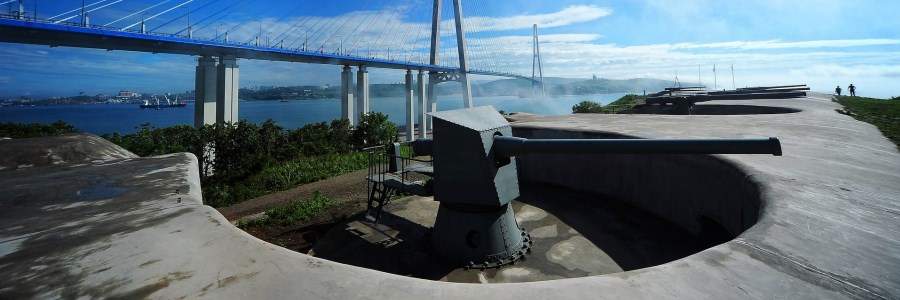
Shtykovskie Ponds
Shtykovskie Ponds is not an ordinary recreation spot: it is a park with wooden architecture, that can be interesting for people of different ages to visit. There are many amenities such as peace benches, wooden playgrounds, rope adventure courses and hammocks swinging between trees. The park is located in an ecological area, 80 km far from Vladivostok.
People come to the park to spend some days in comfortable small houses, as well as to spend just a day, enjoying fresh air, cooking barbecue and doing sports. In winter, there are ski and tubing tracks, a skating rink.
The Ponds area offers special workshops where children and adults can spend some hours making chocolates, sculpting pots, felting wool, fusing glass, etc.
Botanical Gardens
Botanical Garden-Institute of the Far Eastern Branch of the Russian Academy of Sciences is the largest botanical garden in the Far East of Russia. Botanical Garden-Institute is a protected natural area of federal significance. Botanical Garden-Institute conducts scientific researches on plant conservation, plant ecology, vegetation ecology, phytogeography, environment protection, as well as accomplishes educational programs, organizes conferences, trainings & seminars.
The botanical garden has many different plants (more than 3100 open soil species). There are 780 species of tropical and subtropical plants in the greenhouses.
The best time to visit is September and October: colorful landscapes, all in gold and red colors. There are some very well designed beds that feature a wide variety of plants, perennials and annuals alike, the ornamental section, the wooded area - a beautiful mixed forest populated by birch, oak, fir and pine. The understory features a handful of fern species, several deciduous shrubs (Ribes among them), a few berry bushes and various ground plants. There are also geese, swans and fish in the pools.
Sopka Burachka - Hiking area in Vladivostok
Its height is 138 meters. Burachka Hill has long been a cult place – residents of Vladivostok love to climb to the top, as it offers a beautiful view of the whole city. You will see the waters of the Bay of Diomede, and Ulysses, Russian Island, the lighthouse on the Tokarev Spit and the water space of the Amur Bay beyond it. You will be able to see the sleeping areas of Churkin well from a height, the Monastery hill with its white dome on top, the Trudovaya and Lugovaya districts. Well, the Golden Horn Bay and especially its northern shore will be at your fingertips.
The staircase with supports in the rock has a length of about 300 meters, the way to the top takes a few minutes. There is a magnificent view all along the way. Approximately in the middle of the ascent, you can relax on a bench. Mostly, almost the entire staircase is one large viewing platform. There are two points for photographing – a large one at the top and a small one below.
https://goo.gl/maps/qDgQ5s9Fjfx7ckBUA
